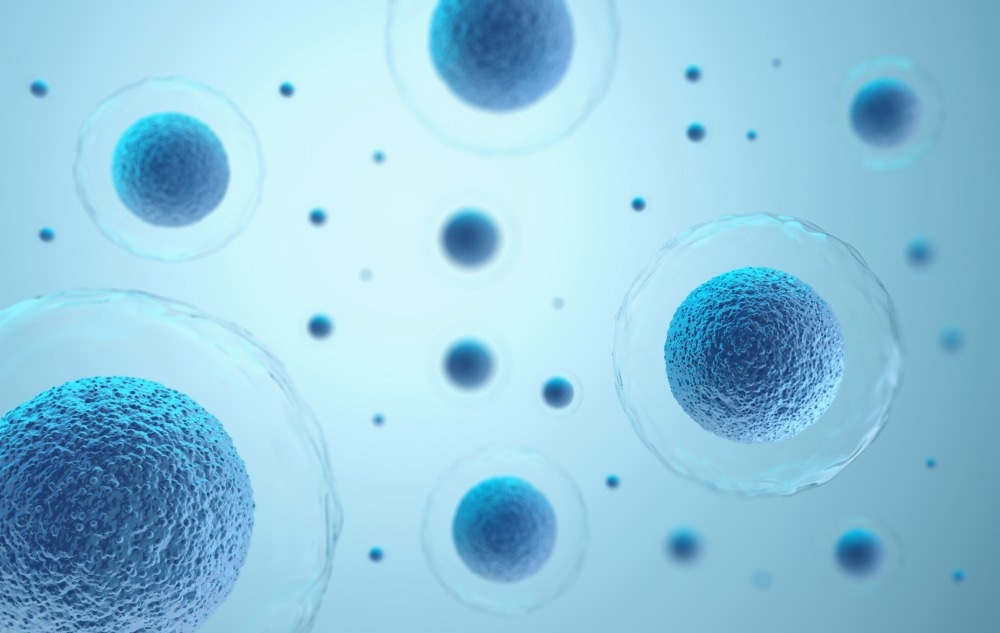Reviewed by Danielle Ellis, B.Sc.May 19 2023
Cells need to be able to quickly alter their form if they are to migrate. Cells do this by storing additional “skin” amid folds and bumps on their surface, according to a team of researchers from the University of North Carolina in Chapel Hill.

Image Credit: Anusorn Nakdee/Shutterstock.com
This extra cell surface can be quickly extended to cover transient protrusions and then folded away for the following instance. The research was published on May 17th, 2023 in the Biophysical Journal.
Although cell membranes are incredibly flexible, they can only be stretched by around 3% before they rupture. It is possible for cells to migrate and divide while securely retaining cell volume and membrane integrity by having additional wrinkles of surface area that can expand on demand.
It is a safety measure because you can't stretch the cell membrane, and if it breaks, the cell will lyse and die, so cells need to have this reserve. These projections can store massive amounts of cell surface and are highly dynamic, which means they can be rapidly dismounted and immediately rebuilt in other locations on the cell periphery.”
Maryna Kapustina, Study First Author and Biophysicist, University of North Carolina
The protrusions on the surface of cells vary in size and form. Some have very little internal structure and are little, rounded bumps on the cell surface. These are referred to as blebs.
Blebs appear in a matter of seconds and disappear after some time. Larger locomotory protrusions require more time to generate, but because of their interior structure, which is made up of actin and microtubules, they can endure for more than an hour.
The researchers saw spherical, cigar-shaped, and irregularly shaped cells that were placed in a 3D collagen matrix, a meshwork of collagen fibers that the cells could compress and travel through, using electron and fluorescence microscopy. The movement and surface dynamics of the cells were recorded over a period of many hours using fluorescent tags.
The researchers demonstrated that when the cells were rounded, their surfaces were rough and complicated, covered with numerous small surface projections including folds, blebs, and microvilli. But as the cells grew protrusions, the additional folds in their “skin” unwrinkled and their surfaces smoothed out, especially in the areas next to the protrusions.
The two primary methods that cells move, mesenchymal and ameboid locomotion, are believed by the researchers to need additional cell surface. Cells that are engaged in mesenchymal locomotion cling to surfaces in their surroundings and employ contractile forces to push through collagen fibers or move along 2D surfaces.
Cells are driven by the swift motions of tiny “blebby” protrusions during ameboid locomotion, which enables significantly quicker movement, as opposed to adhesions.
Although their precise function is unknown, the team believes that microtubules play a significant role in controlling cell surface excess during both mesenchymal and ameboid locomotion.
Kapustina concluded, “Microtubules might be providing mechanical support for the cell surface, or it might have something to with activating actin beneath the cell membrane to create an active site for a stable protrusion. When you don’t have this active site to create a stable protrusion, the cells basically just form blebs.”
Source:
Journal reference:
Kapustina, M., et al. (2023). Changes in cell surface excess are coordinated with protrusion dynamics during 3D motility. Biophysical Journal. doi.org/10.1016/j.bpj.2023.04.023